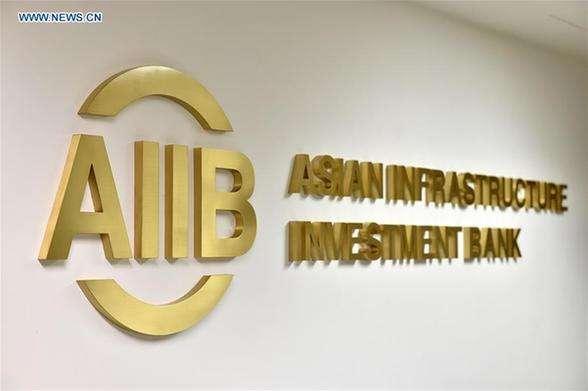Abstract: Gu Bin, an associate professor at the Beijing Foreign Studies University said in his article AIIB should broaden horizons to gain global impact that the Asian Infrastructure Investment bank (AIIB) has had global ambitions ever since its establishment in December 2015. However, the bank this year set a ceiling on non-regional investment, limiting it to 15 percent of total financing. This decision by the board of directors has the effect of curtailing the bank's ambitions, and it should be revoked in the best interest of the bank.
The full text of the article is as follows:
The Asian Infrastructure Investment bank (AIIB) has had global ambitions ever since its establishment in December 2015. The bank has "three global goals" - global recruitment, global procurement and global investment prioritizing Asia.
However, the bank this year set a ceiling on non-regional investment, limiting it to 15 percent of total financing. This decision by the board of directors has the effect of curtailing the bank's ambitions, and it should be revoked in the best interest of the bank.
First, the bank's authorized capital - 100 billion U. S. dollars - is subscribed by regional members (75 percent) and non-regional members (25 percent). The term "region" as defined by AIIB law refers to Asia and Oceania, consisting of Asian countries, as well as Russia, Australia, New Zealand, and the Pacific Islands.
There are various motives for a country to join the AIIB.
First, a country may want to have a say in the bank by subscribing its due capital share and placing its own nationals in bank management.
Second, a country may want to help its domestic enterprises obtain business opportunities - for example, by engaging in AIIB corporate or project procurement contracts.
Third, a country may want to receive AIIB loans and investment itself.
If non-regional members are only eligible to receive 15 percent of the AIIB's investment, while contributing 25 percent of the bank's capital, that will dim non-regional countries' enthusiasm for the bank as a member, or a potential member.
These disincentives could be mitigated by non-regional recruitment or by non-regional procurement. But these possibilities are uncertain, compared the clearly designated 15 percent ceiling for non-regional investment, so such moves are hardly convincing for non-regional members.
Even within the 15-percent portion, the eligibility requirements are demanding. In principle, a non-regional investment must benefit Asia significantly. But in practice, only regions that are geographically proximate to and closely economically integrated with Asia are most likely to be considered. For example, Egypt has been the only non-regional recipient of AIIB financing, because it has the territory of the Sinai Peninsula in the Asian continent.
This type of requirement must be changed. The bank must be eligible to invest globally, including in Africa, the Americas and Europe. With close cooperation with peer institutions of pertinent non-regions - African Development Bank, Inter-American Development bank, European Bank for Reconstruction and Development, and Eurasian Development Bank - the AIIB could expand its investment in those regions.
No doubt the bank has its DNA in Asia, since 22 Asian countries and regions signed the memorandum of understanding to establish the AIIB in 2014. What's more, regional members are privileged to subscribe 75 percent of bank capital, effectively preserving the lender's Asian character.
But now bank membership has already burgeoned to 87, with 37 non-regionals covering every continent except Antarctica. The letter "A" in the "AIIB" should thus represent Africa, the Americas and others, on top of Asia and Oceania. The momentum of openness should be maintained, not contained.
First, the 15-percent non-regional investment limit must be lifted, at least to a larger proportion, say 25 percent.
Second, the bank's decisions on potential non-regional investment should be flexible, rather than rigidly limited to geographically proximate areas.
Starting in January 2019, the bank will delegate its power to approve projects from the board to the president. This new development in bank governance has enormous exceptions, however; the president may still have to ask the board for project approval as before. A decision on non-regional investment is one such exception.
The reservation of non-regional financing approval to the board must be revoked. The reservation tends to increase bank bureaucracy, decrease operational efficiency, and obscure responsibility between the board and management, particularly when a project goes sour.
All those factors go against the intent of the bank's negotiators when they decided to establish a non-resident board for the bank, a major lesson the AIIB learned from traditional banks. With a resident board, those banks are often highly bureaucratic, politicized and unduly likely to delay project processing.
If the president has power to approve non-regional financing, the bank will be able to operate in a more efficient, professional and fiscally sustainable manner, with a pipeline of bankable projects selected globally, rather than locally.
So far, of the AIIB's approved financing of 6.4 billion U. S. dollars in total, nearly one in three dollars has gone to India, the biggest recipient of AIIB financing. There may be various reasons for such a peculiar concentration of AIIB investment; for example, ideally India's proposed projects should be top quality.
But regional concentration can be financially risky for the bank, and a more diversified investment portfolio is conducive to all members, including non-regional economies.
Among non-regional members, developed countries typically need to rebuild their infrastructure after decades of use, but their local governments lack money to do the job. Since their deteriorating roads and facilities are potentially good projects, why can't the AIIB jump in? This would be a milestone in the 70-plus-year history of multilateral development financing, bringing welfare to local people in a developed member for the first time.
This will be attractive for the US and Japan, the only two powers still lingering outside the bank.




 A single purchase
A single purchase









